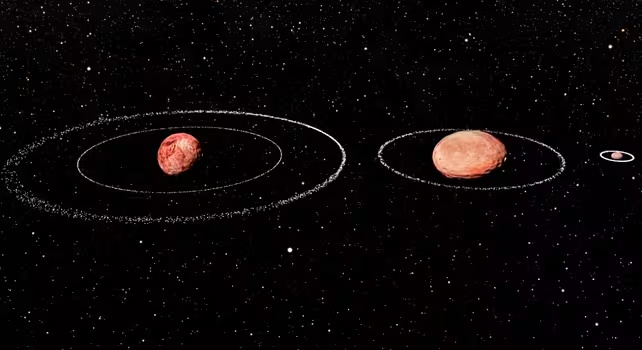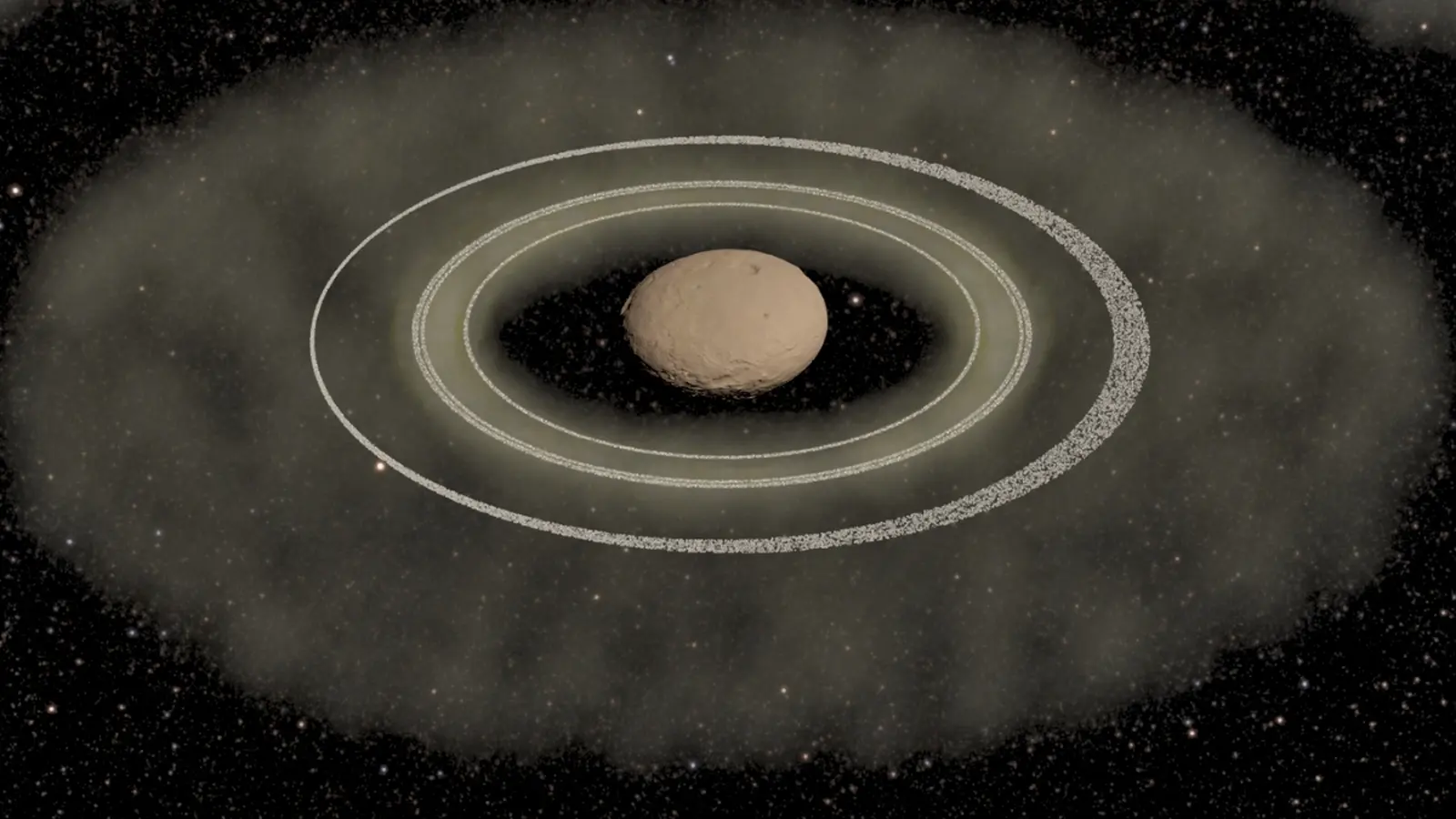5 Minutes
New observations suggest the centaur Chiron—a small, comet‑like world orbiting between Jupiter and Uranus—is surrounded by a rapidly evolving system of rings and debris. Recent stellar occultation data reveal multiple ring features and a diffuse disk that appear to be forming and changing on human timescales, offering a rare window into how ring systems arise around small bodies.
How astronomers caught rings forming in real time
Chiron is a 210‑kilometer‑wide object that blurs the line between comet and asteroid. Classified as a centaur, it follows an elliptical path between Jupiter and Neptune, frequently perturbed by the giant planets. Because it’s distant and faint, direct imaging provides limited detail. But when Chiron passes in front of a background star—an event called an occultation—its silhouette and surrounding material briefly backlight into view.
On 10 September 2023, observers across South America coordinated to record one such occultation. Thirty‑one telescopes captured the star’s light as Chiron and its surroundings crossed the line of sight. The combined dataset revealed not only the main body’s brief dip in brightness but also multiple shorter, shallower dips consistent with rings and extended material.
"When Chiron passed in front of a distant star, its light was dimmed not only by the main body but also by multiple structures surrounding it," said astronomer Chrystian Pereira of the National Observatory in Brazil. "We were able to map this system in unprecedented detail."
What the data actually show
The occultation signatures indicate at least three discrete ring signals at orbital radii near 273 km, 325 km and 438 km from Chiron’s center. In addition, the team reconstructed a broader, disk‑like component extending roughly from 200 to 800 km, plus a faint, outer signal detected near 1,380 km.
These features contrast with earlier analyses of a 2018 occultation dataset led by Amanda Sickafoose of the Planetary Science Institute, suggesting that the environment around Chiron is changing. Pereira and colleagues argue that some rings lie close enough to Chiron that its gravity and collisions would rapidly alter or even disperse them—implying that the structures are recent and actively evolving.
The simplest explanation is that Chiron underwent a comet‑like outburst around 2021, ejecting dust and ice. That material seems to be settling into the object’s equatorial plane, shaped by gravitational resonances and mutual collisions into a system of rings and a transient disk.
Why this matters for planetary science
Ring systems around small bodies are rare but increasingly recognized. Objects such as Chariklo, Haumea and Quaoar also host rings, yet none of the Solar System’s moons display comparable debris belts. Chiron may therefore serve as a laboratory for studying early ring formation and the processes that transform transient ejecta into coherent rings.
Understanding ring formation has implications beyond the tiny centaurs. The same physics—collisional damping, resonant sculpting, and the balance between dispersion and self‑gravity—also applies to protoplanetary disks and the rings around giant planets. Observing ring systems in different configurations and sizes helps refine dynamical models and informs how material migrates and aggregates in low‑gravity environments.

Other minor planets with rings include (from left) Quaoar, Haumea, and Chariklo. Interestingly, none of the Solar System's moons have rings. (National Observatory)
Observing methods and the power of occultations
Occultations remain one of the most effective ways to detect faint circum‑object material. Even a short, few‑second occultation can deliver high‑resolution constraints on ring radii, width, and opacity when multiple observers transect different chords across the target. Such campaigns benefit from international coordination and rapid response—something astronomers achieved well for Chiron in 2023.
Complementary observations—thermal infrared monitoring, spectroscopy, and resolved imaging with next‑generation telescopes—could confirm the composition of the ejected material and track how quickly the disk turns into stable rings, if it does. Monitoring brightness variations over months to years can also reveal fresh outbursts and mass‑loss events that feed the system.
Expert Insight
"Chiron offers a rare real‑time glimpse of small‑body ring genesis," says Dr. Elena Morales, an astrophysicist specializing in planetary rings. "We usually infer ring histories from static snapshots; here we can watch processes that may repeat across the Solar System. Continued occultation campaigns paired with infrared and high‑resolution imaging will show whether these rings are ephemeral or the start of a long‑lived structure."
As observers continue to track Chiron, each new occultation may reveal changes that happen on timescales as short as years or decades. That dynamism makes Chiron a compelling target—not just for cataloging another oddball in the outer Solar System, but for testing how ring systems form, evolve, and sometimes vanish.
Source: sciencealert
Comments
Reza
is this even real? occultations are neat but could the dips be transient dust clouds not stable rings, or am i missing something
atomwave
wow, didn't expect tiny Chiron to grow rings so fast... kinda poetic and a bit eerie. mind blown! gotta read more


Leave a Comment